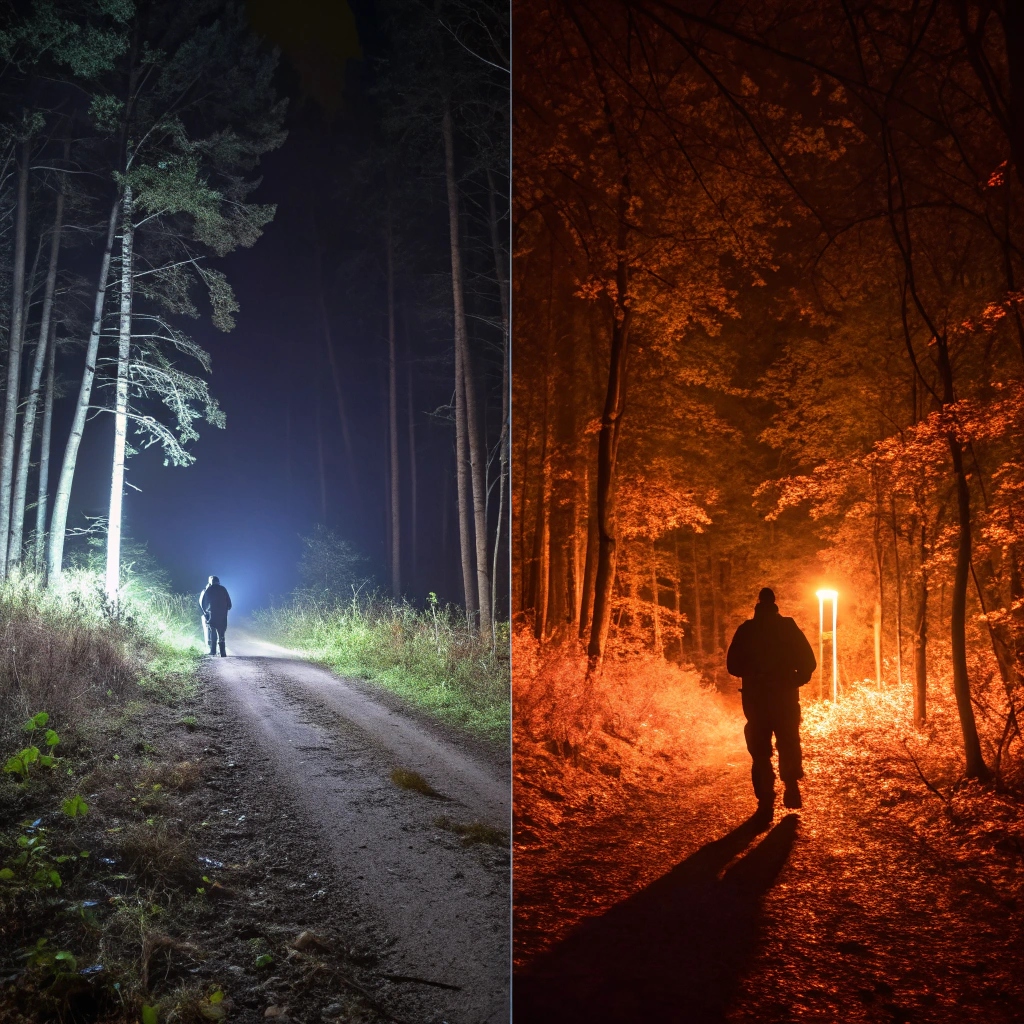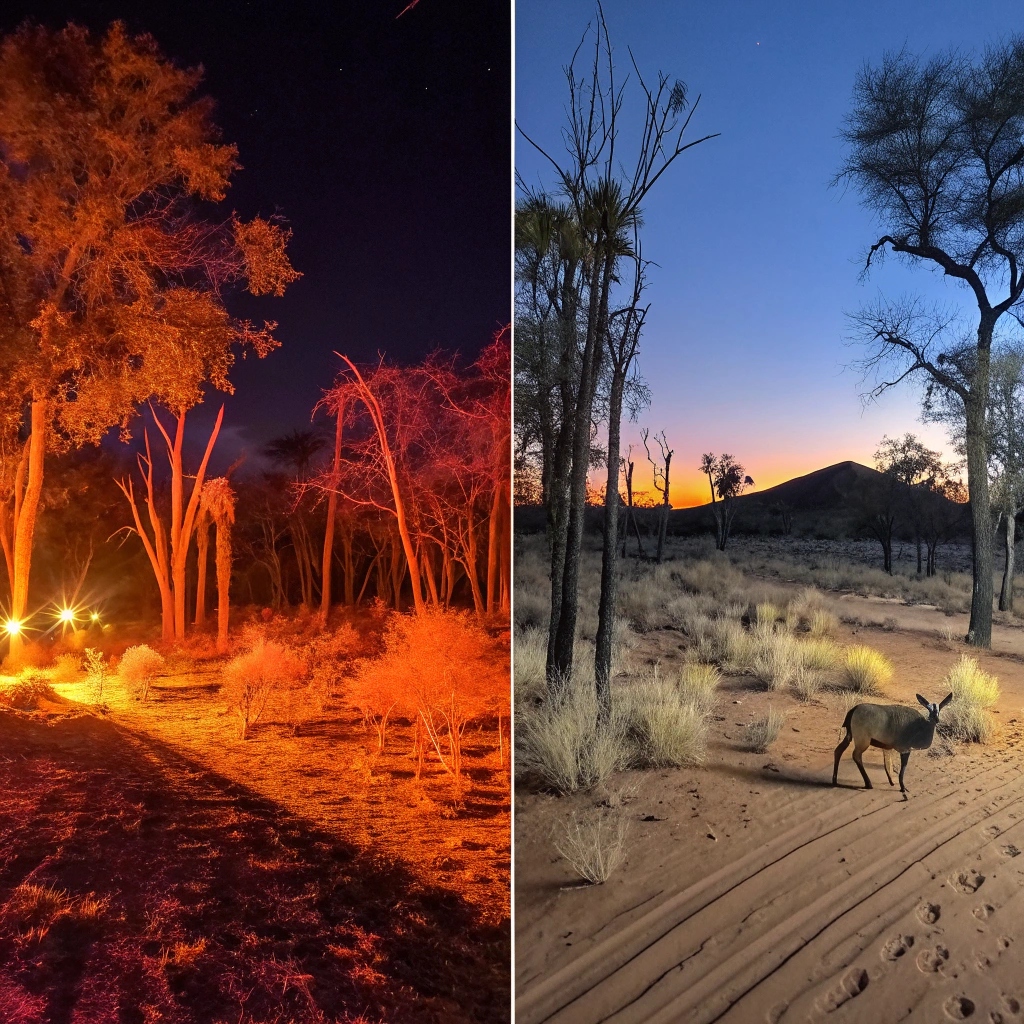What is better night vision or thermal?
When it comes to seeing in the dark, two technologies reign supreme: night vision and thermal imaging. Both have their unique strengths and applications, but which one is better?
Night vision amplifies existing light to create a visible image. It’s a technology that has been widely used in military operations, hunting, and astronomy. However, it requires some light to function and can be disrupted by bright light sources or adverse weather conditions.
On the other hand, thermal imaging detects heat signatures and represents them as an image. It can see through smoke, fog, and foliage, and can detect hidden objects or individuals in complete darkness. Yet, it may not provide the same level of detail as night vision under ideal conditions.
In this article, we’ll delve into the night vision vs thermal debate, comparing their performance in various conditions and exploring their practical applications. Our goal is to help you determine which technology is better suited for your specific needs.

Understanding Night Vision Technology
Night vision technology harnesses the power of light amplification. It works by capturing and intensifying minimal light, including infrared, to produce visible images.
This technology relies on image intensifier tubes1. These tubes convert photons into electrons to amplify the captured image. This results in a green-tinted image due to the phosphor screen in the device.
Night vision requires some level of ambient light. Moonlight and starlight often provide enough illumination. However, pitch-black environments can render it useless.
An IR illuminator2 can enhance night vision performance. It acts like a flashlight but emits infrared light. This light is invisible to the naked eye.
Night vision technology is versatile. It’s commonly used in military operations, wildlife observation, and more. Its long history of development has solidified its role in numerous applications.
Exploring Thermal Imaging Capabilities
Thermal imaging operates based on detecting heat signatures. Unlike night vision, it does not rely on light. It uses a microbolometer sensor3 to sense temperature differences.
This sensor captures infrared radiation emitted by objects. All objects emit some level of infrared, based on their heat. The thermal imager converts this data into an image.
Thermal devices can see through smoke and fog. This capability makes them invaluable in rescue operations. They are also effective in detecting hidden individuals or animals.
Thermal imaging is not affected by visual camouflage. It detects heat, not light, so dense foliage isn’t a barrier. This makes it ideal for various environmental applications.
Thermal cameras are crucial in many fields. They play a role in firefighting, medical diagnostics, and more. Their ability to operate in complete darkness provides a significant advantage over other technologies.
Night Vision vs Thermal: Comparing Performance in Various Conditions
When considering performance, both night vision and thermal have unique strengths. Each technology is suited to specific scenarios. Let’s explore how they fare in different conditions.
Night vision is effective in low-light settings, like starlight or moonlight. It amplifies existing light to produce visible images. However, it struggles in total darkness.
Thermal imaging detects heat, not light, giving it an edge in darkness. It excels in environments where visibility is obstructed, like smoke-filled areas. This capability is vital for search and rescue teams.
Visibility Through Obstructions
Thermal excels at seeing through barriers like fog and smoke. It detects heat from objects behind these obstacles. This makes it useful in firefighting and rescue missions.
Night vision, on the other hand, relies on light. Hence, it can’t penetrate such obstructions effectively. Thick smoke or dense foliage can hinder its performance.
Thermal’s ability to detect hidden threats is unmatched. It can reveal individuals concealed by foliage or debris. Night vision lacks this penetrating capability.
Light Sensitivity and Overexposure
Night vision depends on light and can be disrupted by bright sources. Sudden changes in light, like a flashlight, can cause temporary blindness. This is a significant limitation in dynamic environments.
Thermal does not need light, thus avoiding this issue. It can handle abrupt changes in light levels seamlessly. This gives it an advantage in environments with fluctuating light conditions.
Both technologies have their pros and cons regarding light sensitivity. Night vision is excellent in steady low-light; thermal adapts better to varied conditions. Choosing depends on the specific lighting scenarios you face.
Image Quality and Detail
Night vision often delivers sharper images in ideal low-light conditions. It enhances details, making it suitable for tasks requiring clarity. This is invaluable for surveillance and navigation.
Thermal imaging, however, shows contrasts based on heat differences. It might not offer the same level of detail as night vision. Yet, it offers a broader perspective in difficult conditions.
Night vision images may appear green-tinted due to image intensification. Thermal provides color palettes representing temperatures. Each technology thus provides distinct visual data for analysis and decision-making.

Practical Applications: When to Use Night Vision or Thermal
Choosing between night vision and thermal largely depends on the intended use. Each has distinct advantages in various practical applications. Understanding these can guide your decision.
Hunting and Wildlife Observation
For hunting and wildlife observation, both night vision and thermal are helpful. Night vision aids in maintaining situational awareness. It allows hunters to see more clearly in low-light conditions.
Thermal imaging, however, excels in spotting hidden animals. It detects heat signatures, making it possible to track game that might be camouflaged.
Security and Surveillance
In security and surveillance4, night vision is often the top choice. It provides more detail, essential for identifying individuals or objects. Many law enforcement units rely on it for enhanced visibility during patrols.
Thermal imaging, however, helps in detecting intruders regardless of camouflage. It can identify heat signatures, even if a person is trying to hide.
Search and Rescue Operations
Thermal imaging is crucial in search and rescue missions. It can locate missing persons by their body heat, even in harsh conditions. This capability is vital in scenarios involving smoke, fog, or debris.
Night vision can enhance navigation for rescuers, ensuring they see clearly in low-light. Yet, its effectiveness diminishes when obstructions are present.
Cost Considerations: Investing in Night Vision or Thermal Devices
When investing in vision enhancement tools, cost is a significant factor. Night vision devices generally have a lower price tag than thermal devices. This makes them a more accessible choice for many hobbyists and recreational users.
Thermal imaging devices, however, tend to be more expensive. This cost reflects their advanced technology and versatile capabilities. Professionals often find these features critical for their work.
The pricing gap can influence your choice, especially if budget constraints are present. Consider what features are essential for your needs and what you’re willing to pay for those benefits.
Additionally, always weigh the initial purchase price against long-term value. Thermal devices might be pricier, but their ability to function in various conditions can offset initial costs. Balancing cost with functionality ensures you make a well-informed investment decision.
The Verdict: Which is Better for Your Needs?
Ultimately, the choice between night vision and thermal imaging depends on your specific requirements. Consider the conditions in which you will be operating.
If you often find yourself in environments with some available light, night vision could be a practical choice. It excels in providing detailed images in low-light settings.
On the other hand, if your work or activities require navigating complete darkness or detecting hidden objects, thermal imaging might be the superior option. Its versatility in various conditions is unmatched.
For users needing cost-effective solutions, night vision offers significant advantages. Meanwhile, for those prioritizing feature-rich devices, investing in thermal can be worthwhile. Evaluate your needs closely to determine which technology aligns best with your objectives.
FAQs: Common Questions About Night Vision and Thermal Imaging
What are the main differences between night vision and thermal imaging?
Night vision amplifies ambient light to create images. Thermal imaging uses heat differences to form images. Each serves distinct purposes.
Can thermal imaging work in daylight?
Yes, thermal devices function in both daylight and nighttime. They detect heat signatures, unaffected by light conditions.
Is night vision affected by weather conditions?
Night vision can be impaired by rain, fog, or heavy snow. Thermal imaging performs better in such adverse conditions.
Which is more expensive, night vision or thermal imaging?
Thermal imaging devices are generally more expensive. Night vision offers a cost-effective alternative with some limitations.
What should I consider when choosing between these technologies?
Consider the environment of use, budget, and specific needs. Assess whether detail or long-range detection is more vital for your tasks.
-
Explore this link to understand how image intensifier tubes work and their crucial role in enhancing night vision capabilities. ↩
-
Learn about IR illuminators and how they improve night vision, making it more effective in low-light conditions. ↩
-
Understanding the microbolometer sensor is key to grasping how thermal imaging detects heat signatures effectively. ↩
-
Discover best practices for using night vision in security and surveillance to enhance safety and effectiveness. ↩
